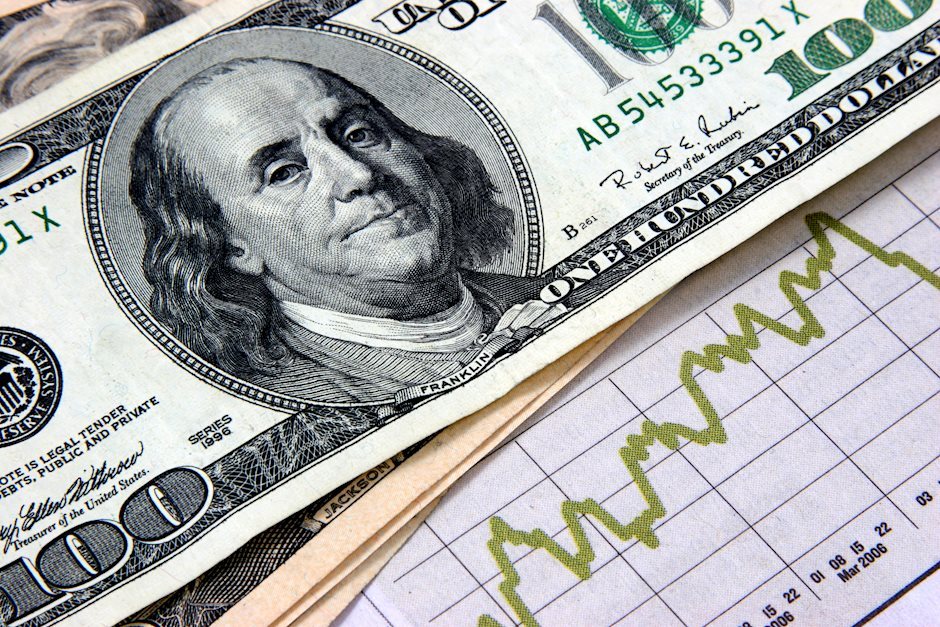US Dollar rides high as hot inflatin data fuel hawkish bets on the Fed
- DXY Index is currently trading around the high level of 105.45, realizing gains.
- Core PPI for March came in higher than expected on Thursday.
- Weekly Jobless Claims also came in hot.

The US Dollar Index (DXY) is currently trading at 105.45, marking its highest position since November 2023. The Greenback continues to rise on the back of hawkish bets on the Federal Reserve (Fed) due to hot inflation figures. A strong labor market also raises the appeal of the Greenback.
After a robust labor market report and signs of rising inflation in March, Fed officials might begin indicating that they need more proof of the economy slowing down before lowering rates. Consequently, US Treasury yields could keep climbing, which would be advantageous for the USD.
Daily digest market movers: Dollar edges higher on strong data, Treasury yields continue climbing
- Producer Price Index (PPI) for March increased by 0.2% MoM and 2.1% YoY, falling short of predicted figures.
- The annual core PPI surpassed predictions with a 2.4% rise on a yearly basis compared to the expected 2.3% increase and 2% recorded in February.
- Weekly Initial Jobless Claims showed improvement, registering at 211K, lower than the anticipated 215K and a reduction from the previous 222K.
- Market expectations for rate cuts have seen fluctuations after the CPI data release.
- Odds of a cut in June plummeted toward 20% following March’s inflation data on Wednesday.
- US Treasury bond yields continued rising. The 2-year yield was the only one that declined to 4.95%, while the 5 and 10-year yields rose to 4.62% and 4.58%, respectively.
DXY technical analysis: DXY continues rising as bullish momentum pushes further
The technical indicators on the daily chart reflect a bullish momentum for the DXY. The Relative Strength Index (RSI), following a positive slope in positive territory, suggests the presence of underlying buying momentum. In addition, the Moving Average Convergence Divergence (MACD) seems to corroborate this bullish outlook. It shows rising green bars, adding conviction to the market's bullish sentiment.
A glance at the Simple Moving Averages (SMAs) reveals a similar story as the DXY is firmly seated above the key 20, 100 and 200-day SMAs. This positioning suggests that the current trend is bullish with the bulls having the upper hand.
Central banks FAQs
Central Banks have a key mandate which is making sure that there is price stability in a country or region. Economies are constantly facing inflation or deflation when prices for certain goods and services are fluctuating. Constant rising prices for the same goods means inflation, constant lowered prices for the same goods means deflation. It is the task of the central bank to keep the demand in line by tweaking its policy rate. For the biggest central banks like the US Federal Reserve (Fed), the European Central Bank (ECB) or the Bank of England (BoE), the mandate is to keep inflation close to 2%.
A central bank has one important tool at its disposal to get inflation higher or lower, and that is by tweaking its benchmark policy rate, commonly known as interest rate. On pre-communicated moments, the central bank will issue a statement with its policy rate and provide additional reasoning on why it is either remaining or changing (cutting or hiking) it. Local banks will adjust their savings and lending rates accordingly, which in turn will make it either harder or easier for people to earn on their savings or for companies to take out loans and make investments in their businesses. When the central bank hikes interest rates substantially, this is called monetary tightening. When it is cutting its benchmark rate, it is called monetary easing.
A central bank is often politically independent. Members of the central bank policy board are passing through a series of panels and hearings before being appointed to a policy board seat. Each member in that board often has a certain conviction on how the central bank should control inflation and the subsequent monetary policy. Members that want a very loose monetary policy, with low rates and cheap lending, to boost the economy substantially while being content to see inflation slightly above 2%, are called ‘doves’. Members that rather want to see higher rates to reward savings and want to keep a lit on inflation at all time are called ‘hawks’ and will not rest until inflation is at or just below 2%.
Normally, there is a chairman or president who leads each meeting, needs to create a consensus between the hawks or doves and has his or her final say when it would come down to a vote split to avoid a 50-50 tie on whether the current policy should be adjusted. The chairman will deliver speeches which often can be followed live, where the current monetary stance and outlook is being communicated. A central bank will try to push forward its monetary policy without triggering violent swings in rates, equities, or its currency. All members of the central bank will channel their stance toward the markets in advance of a policy meeting event. A few days before a policy meeting takes place until the new policy has been communicated, members are forbidden to talk publicly. This is called the blackout period.
Author

Patricio Martín
FXStreet
Patricio is an economist from Argentina passionate about global finance and understanding the daily movements of the markets.
















